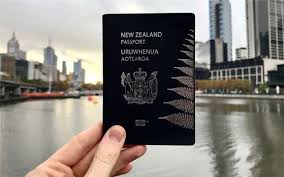The Future of Digital Creativity: How AI and Machine Learning Are Shaping the Landscape
The future of digital creativity is being revolutionized by the integration of AI and Machine Learning. From art and design to content generation and multimedia experiences, these technologies are enhancing the creative process. Allowing creators to explore new avenues and reach unprecedented levels of innovation. This blog explores the future of digital creativity, focusing on how AI and Machine Learning are reshaping the creative landscape, and providing insights on what to expect in the coming years.
How Digital Creativity is Being Transformed by AI and Machine Learning
Digital creativity has entered a new era, where AI and Machine Learning tools are helping artists, designers, and content creators push the boundaries of their work. These technologies are not only making creative processes more efficient. But they are also opening the door to entirely new possibilities.
Automating Repetitive Tasks
One of the primary ways AI and Machine Learning are transforming digital creativity is through the automation of repetitive tasks. These technologies enable artists and designers to focus on the conceptual and creative aspects of their work, while AI handles tasks like resizing images, color correction, and rendering. By leveraging these tools, creators can increase productivity and dedicate more time to innovation.
Enhancing Design and Artistic Output
Digital creativity is also benefiting from AI-driven tools that help enhance artistic output. Programs such as how to train stable diffusion models for image generation allow artists to create high-quality visuals based on input data. These models can be trained to generate artwork in a specific style. Or even create completely new designs by blending multiple sources of inspiration.
According to a report by PWC, AI is expected to contribute $15.7 trillion to the global economy by 2030, with a significant portion of this growth coming from the creative industries. AI-powered tools like Stable Diffusion and Generative Adversarial Networks (GANs) are already playing a key role in shaping this future.
AI and Machine Learning in Content Creation
The impact of AI and Machine Learning extends beyond visual arts, also reaching areas like content generation. From articles to video scripts, AI is helping automate content creation while maintaining high levels of quality.
AI-Generated Text and Videos
Leveraging AI in content creation allows companies to generate articles, blog posts. And even video scripts in a fraction of the time it would take a human. AI-powered language models like GPT-4 are capable of producing coherent, contextually relevant text based on user input. These models can also learn from previous data to improve their output over time, making them an invaluable tool for businesses looking to scale their content efforts.
For instance, companies are increasingly turning to AI for the automation of content writing tasks, while creative professionals use tools like AI and Machine Learning to edit and refine their work, reducing time spent on manual adjustments. By leveraging AI tools, they can focus on creativity and strategic aspects, rather than repetitive tasks.
Dynamic Content Personalization
AI-driven content personalization is another innovation enhancing digital creativity. By analyzing user data, AI algorithms can tailor content to individual preferences, ensuring that users receive a more personalized and engaging experience. Whether it’s recommending artwork based on a user’s previous preferences or curating a playlist based on listening history, AI is making personalized creativity a reality.
Revolutionizing Art and Design with AI and Machine Learning
The future of digital creativity in the art and design world is being revolutionized by AI tools . That enable both amateur and professional artists to explore new creative possibilities.
AI-Assisted Design
AI-powered design tools are becoming indispensable in various industries. For example, Adobe’s AI-powered tool, Sensei, can suggest design elements based on existing projects or even create new designs autonomously. Artists can also train how to train stable diffusion models to generate artwork that mimics their style or explores new creative directions. This level of collaboration between human and AI allows for faster experimentation and innovation.
A study by Gartner predicts that by 2025, nearly 40% of content in industries like advertising, music, and film will be created or modified by AI systems, showcasing the growing influence of AI on digital creativity.
Ethical Considerations and Challenges
As AI takes a more prominent role in digital creativity, ethical considerations are becoming increasingly important. From questions about authorship and copyright to concerns about bias in AI-generated content, creators must navigate these challenges to ensure responsible use of technology.
Ensuring Ethical AI Use
AI’s influence on digital creativity requires ethical guidelines to ensure that artists’ work remains their own. As AI-generated content becomes more widespread, companies need to establish clear guidelines regarding copyright, ownership. And the ethical use of AI-driven creative tools. This includes ensuring transparency and addressing biases that could be present in AI systems.
According to the World Economic Forum, AI ethics is a growing concern across all industries, with the creative sector being no exception. Businesses are encouraged to take proactive steps to address ethical issues in the development and use of AI-driven creative tools.
The Future of Digital Creativity
Looking ahead, the role of AI and Machine Learning in digital creativity will only continue to grow. Innovations such as AI-driven development, virtual reality (VR), augmented reality (AR). And multimodal AI will shape the next generation of creative tools, enabling creators to explore new frontiers.
AI and Augmented Reality
The combination of AI and AR offers incredible potential for interactive and immersive creative experiences. With AI-enhanced AR, users can interact with digital art in real-time, allowing for unprecedented levels of engagement and creativity. As AR becomes more widespread, the integration of AI will allow artists and designers to create entirely new experiences that blend physical and digital worlds.
The Role of AI in Virtual Reality
In the field of virtual reality, AI and Machine Learning will enable the creation of hyper-realistic environments. Allowing artists and designers to generate immersive worlds and experiences. From AI-generated landscapes to interactive narratives, VR creators will benefit from AI’s ability to streamline complex processes and create more engaging content.
Conclusion:
The future of digital creativity is being shaped by the rapid advancements in AI and Machine Learning. From automating repetitive tasks to enabling personalized content creation, these technologies are opening up new possibilities for creators across all industries. As AI tools become more sophisticated, their role in enhancing digital creativity will only grow, providing creators with innovative ways to push the boundaries of what’s possible.










Leave a Reply